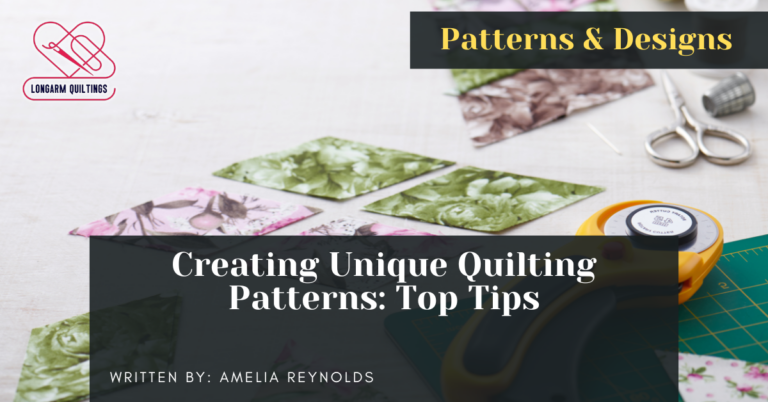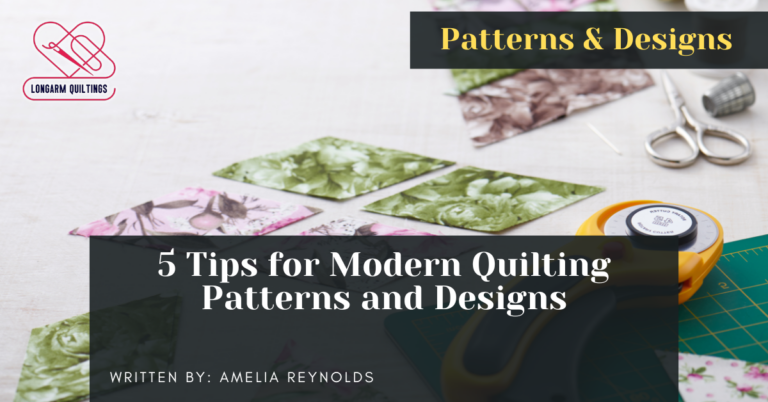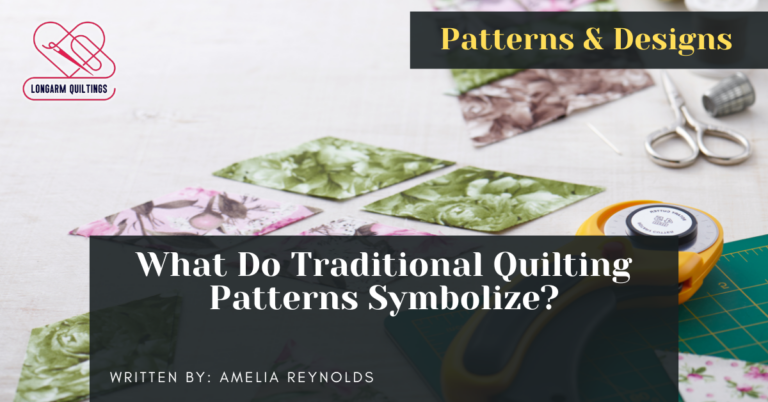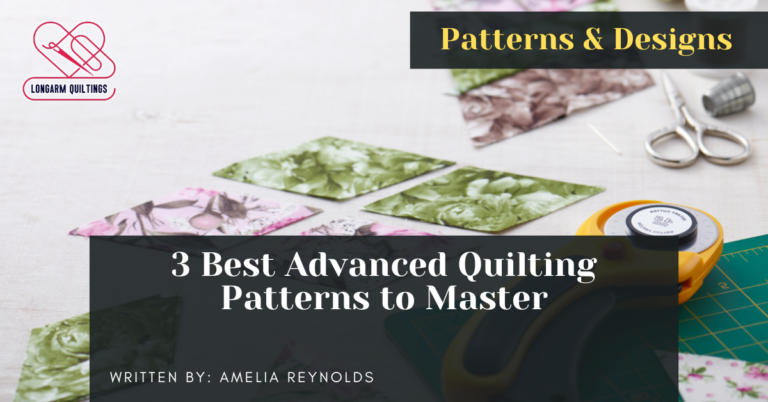Embarking on the journey of quilting as a beginner can be both exciting and overwhelming. The world of quilting patterns is vast, ranging from traditional designs with a rich history to modern creations that push the boundaries of creativity.
In this guide, we will explore simple quilting patterns tailored for beginners, offering a solid foundation to hone your skills and unleash your creativity. Whether you are drawn to the timeless charm of classic designs or the fresh perspectives of contemporary patterns, this guide will equip you with the essential knowledge to start your quilting journey on the right foot.
Essential Tools for Quilting Beginners
For individuals venturing into the art of quilting, acquiring essential tools is the foundational step towards creating beautiful and intricate quilt patterns. Quilting notions are indispensable in the process of quilt-making. These include items such as pins, needles, thimbles, seam rippers, and thread. Quality quilting notions can make a significant difference in the ease and precision of your quilting projects.
Cutting tools are equally essential for quilters. A rotary cutter, cutting mat, and acrylic ruler are key tools that allow for accurate and efficient cutting of fabric pieces. The rotary cutter enables smooth and precise cuts, while the cutting mat protects surfaces and ensures longevity of the tools. The acrylic ruler is crucial for measuring and cutting fabric with precision.
Investing in high-quality quilting notions and cutting tools may seem daunting at first, but these tools are the building blocks for successful quilting projects. Remember, patience and practice are key as you familiarize yourself with these tools and techniques. Happy quilting!
Choosing the Right Fabrics
Selecting suitable fabrics is a crucial step in creating a successful quilting project, as the right choice can enhance both the visual appeal and durability of your finished quilt. When it comes to fabric selection, consider using 100% cotton fabrics for their ease of use, durability, and wide range of colors and prints available. Beginners often find cotton easier to work with due to its stable nature and the way it holds its shape when pieced together.
Color coordination plays a significant role in the overall aesthetic of your quilt. Start by choosing a color scheme that appeals to you and fits the theme of your project. You can opt for a monochromatic scheme using different shades of a single color for a harmonious look, or experiment with complementary colors for a bold contrast. Remember to consider the mood you want to convey with your quilt and select fabrics accordingly. Don't be afraid to mix patterns and textures to add depth and visual interest to your design.
With a keen eye for fabric selection and color coordination, you are well on your way to creating a beautiful quilt that reflects your style and creativity.
Basic Quilting Techniques
Beginners embarking on their quilting journey will benefit from mastering a few fundamental quilting techniques that serve as the foundation for creating beautiful and well-crafted quilts. When it comes to stitching basics, beginners have the option of using a sewing machine or hand stitching. Using a sewing machine can save time and provide more consistent stitches, while hand stitching offers a personal touch and allows for more intricate designs.
Understanding quilting terminology is also essential for beginners. Key terms such as 'sashing,' 'basting,' and 'binding' may initially seem daunting, but familiarizing yourself with these terms will make following quilting patterns much easier. Additionally, grasping concepts like 'quilting blocks' and 'piecing' will help you interpret instructions accurately.
Traditional Quilting Patterns
Exploring the rich heritage of traditional quilting patterns opens a world of timeless beauty and craftsmanship for quilters of all skill levels. Classic designs like the Log Cabin, Double Wedding Ring, and Drunkard's Path have been passed down through generations, each with its own story and historical influences.
The Log Cabin pattern, for example, is a symbol of home and hearth, with each strip representing a part of a log cabin. The Double Wedding Ring design is a celebration of love and unity, traditionally made by hand-stitching intricate arcs of fabric together. The Drunkard's Path, with its curved pieces, showcases the quilter's skill in piecing together seemingly mismatched shapes.
These traditional quilting patterns not only offer a glimpse into the past but also provide a sense of connection to quilters who came before. By recreating these classic designs, beginners can learn valuable techniques while creating beautiful pieces that honor the artistry of those who laid the foundation for modern quilting.
Modern Quilting Patterns
For quilters looking to infuse their projects with a contemporary flair, exploring modern quilting patterns offers a creative avenue to express individual style and innovation. Modern quilting patterns often feature sleek geometric designs that bring a sense of sophistication and structure to the quilt. These patterns can incorporate bold shapes like triangles, squares, or circles arranged in a precise and visually striking manner.
Another popular trend in modern quilting is drawing inspiration from abstract art. Quilters can experiment with abstract shapes, asymmetry, and unconventional color combinations to create unique and artistic quilts that truly stand out. Abstract art allows for boundless creativity and encourages quilters to think outside the traditional quilting box.
Tips for Successful Quilting
To achieve successful quilting results, it is essential to focus on precision in cutting and piecing fabric together. When quilting, there are certain mistakes that beginners should avoid to ensure a smooth quilting process. One common mistake is not pressing seams correctly, which can result in bulky or uneven blocks. Make sure to press your seams open or to the side as instructed in the pattern to achieve crisp and professional-looking results.
Another mistake to avoid is not measuring accurately, as inaccuracies in cutting fabric pieces can lead to misaligned blocks and overall quilt distortion. Always double-check your measurements before cutting to prevent this issue.
In quilting, troubleshooting tips can be helpful when facing challenges. If your quilt blocks are turning out smaller than expected, adjust your seam allowance or cutting accuracy. Additionally, if your fabric is puckering while quilting, try using a quilting foot and adjusting the tension on your sewing machine.
Frequently Asked Questions
How Can I Incorporate Different Textures Into My Quilting Projects?
Incorporating different textures into quilting projects can elevate the overall aesthetic and tactile experience. Beginner quilters can start by using fabrics with varying weights, weaves, and patterns to create visual interest and depth in their work.
Are There Any Specific Safety Precautions I Should Take While Quilting?
When quilting, it is essential to prioritize safety. Maintain proper posture to prevent strain, wear eye protection to shield from sharp tools. Ensure fabric selection suits your skill level, use cutting techniques carefully to avoid accidents.
Can I Use a Sewing Machine Instead of Hand-Sewing for Quilting Projects?
When considering machine quilting for beginners, using a sewing machine can offer several benefits such as increased speed and precision. However, drawbacks include a learning curve and potential for mistakes. Practice and patience are key to mastering sewing machine techniques in quilting.
What Are Some Creative Ways to Personalize My Quilts?
Personalizing quilts can be a delightful endeavor. Consider fabric painting to add unique designs or use applique techniques for intricate details. These methods allow for creative expression, making each quilt a one-of-a-kind masterpiece.
How Can I Store My Quilting Supplies to Keep Them Organized and Easily Accessible?
Effective storage solutions for quilting supplies involve utilizing clear containers, shelving units, and labeled bins. Organizing by category ensures easy accessibility and convenience. Implement a system that suits your space and workflow to maintain a tidy quilting area.
Conclusion
In conclusion, mastering simple quilting patterns as a beginner requires patience, practice, and the right tools.
By choosing the right fabrics, learning basic quilting techniques, and exploring traditional and modern patterns, you can create beautiful quilts.
Remember to take your time, enjoy the process, and don't be afraid to make mistakes – they are all part of the learning experience.
Keep practicing and honing your skills, and soon you will be creating stunning quilts with ease.






